
(a)
Interpretation:
Drawing the molecular-level pictures of strong electrolytes when its breaks up into component ions upon dissolving in water.
Concept Introduction:
Strong electrolyte totally dissociates in a solution. These ions are good conductors of emotional current in the solution.
(a)
Answer to Problem 25E
The dissociation of the given strong electrolyte is,
Explanation of Solution
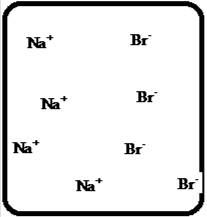
Figure 1
Let us consider the above molecular-level pictures of
number of
(b)
Interpretation:
Drawing the molecular-level pictures of strong electrolytes when its breaks up into component ions upon dissolving in water.
Concept Introduction:
Strong electrolyte totally dissociates in a solution. These ions are good conductors of emotional current in the solution.
(b)
Answer to Problem 25E
The dissociation of the given strong electrolyte is,.
Explanation of Solution
To draw the molecular-level pictures of

Figure 2
Let us consider the above molecular-level pictures of
number of
(c)
Interpretation:
Drawing the molecular-level pictures of strong electrolytes when its breaks up into component ions upon dissolving in water.
Concept Introduction:
Strong electrolyte totally dissociates in a solution. These ions are good conductors of emotional current in the solution.
(c)
Answer to Problem 25E
The dissociation of the given strong electrolyte is,
Explanation of Solution
To draw the molecular-level pictures of
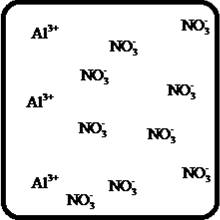
Figure 3
Let us consider the above molecular-level pictures of
number of
should show equal
number of
(d)
Interpretation:
Drawing the molecular-level pictures of strong electrolytes when its breaks up into component ions upon dissolving in water.
Concept Introduction:
Strong electrolyte totally dissociates in a solution. These ions are good conductors of emotional current in the solution.
(d)
Answer to Problem 25E
The dissociation of the given strong electrolyte is,
Explanation of Solution
To draw the molecular-level pictures of

Figure 4
Let us consider the above molecular-level pictures of
number of
(e)
Interpretation:
Drawing the molecular-level pictures of strong electrolytes when its breaks up into component ions upon dissolving in water.
Concept Introduction:
Strong electrolyte totally dissociates in a solution. These ions are good conductors of emotional current in the solution.
(e)
Answer to Problem 25E
The dissociation of the given strong electrolyte is,
Explanation of Solution
To draw the molecular-level pictures of
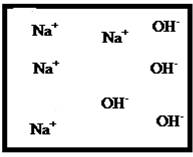
Figure 5
Let us consider the above molecular-level pictures of
Number of
(f)
Interpretation:
Drawing the molecular-level pictures of strong electrolytes when its breaks up into component ions upon dissolving in water.
Concept Introduction:
Strong electrolyte totally dissociates in a solution. These ions are good conductors of emotional current in the solution.
(f)
Answer to Problem 25E
The dissociation of the given strong electrolyte is,
Explanation of Solution
To draw the molecular-level pictures of

Figure 6
Let us consider the above molecular-level pictures of
number of
(g)
Interpretation:
Drawing the molecular-level pictures of strong electrolytes when its breaks up into component ions upon dissolving in water.
Concept Introduction:
Strong electrolyte totally dissociates in a solution. These ions are good conductors of emotional current in the solution.
(g)
Answer to Problem 25E
The dissociation of the given strong electrolyte is,
Explanation of Solution
To draw the molecular-level pictures of
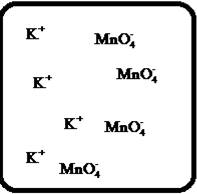
Figure 7
Let us consider the above molecular-level pictures of
number of
(h)
Interpretation:
Drawing the molecular-level pictures of strong electrolytes when its breaks up into component ions upon dissolving in water.
Concept Introduction:
Strong electrolyte totally dissociates in a solution. These ions are good conductors of emotional current in the solution.
(h)
Answer to Problem 25E
The dissociation of the given strong electrolyte is,
Explanation of Solution
To draw the molecular-level pictures of
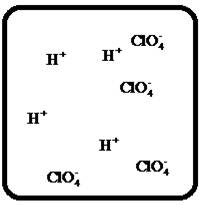
Figure 8
Let us consider the above molecular-level pictures of
number of
(i)
Interpretation:
Drawing the molecular-level pictures of strong electrolytes when its breaks up into component ions upon dissolving in water.
Concept Introduction:
Strong electrolyte totally dissociates in a solution. These ions are good conductors of emotional current in the solution.
(i)
Answer to Problem 25E
The dissociation of the given strong electrolyte is,
Explanation of Solution
To draw the molecular-level pictures of
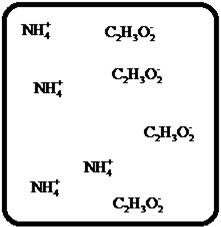
Figure 9
Let us consider the above molecular-level pictures of
Number of
Want to see more full solutions like this?
Chapter 6 Solutions
Bundle: Chemistry: An Atoms First Approach, Loose-leaf Version, 2nd + OWLv2 with Student Solutions Manual, 4 terms (24 months) Printed Access Card
- Indicate the formula of the compound, that is the result of the N- alquilación (nucleofílic substitution), in which an additional lateral chain was formed (NH-CH2-COOMe). F3C. CF3 NH NH2 Br о OMe K2CO3, DABCO, DMFarrow_forwardIdentify the mechanism through which the following reaction will proceed and draw the major product. Part 1 of 2 Br KOH EtOH Through which mechanism will the reaction proceed? Select the single best answer. E1 E2 neither Part: 1/2 Part 2 of 2 Draw the major product formed as a result of the reaction. Click and drag to start drawing a structure. Xarrow_forwardWhat is single-point calibration? Provide an example.arrow_forward
- Draw the major product formed via an E1 pathway.arrow_forwardPart 9 of 9 Consider the products for the reaction. Identify the major and minor products. HO Cl The E stereoisomer is the major product and the Z stereoisomer is the minor product ▼ S major product minor productarrow_forwardConsider the reactants below. Answer the following questions about the reaction mechanism and products. HO Clarrow_forward
- julietteyep@gmail.com X YSCU Grades for Juliette L Turner: Orc X 199 A ALEKS - Juliette Turner - Modul X A ALEKS - Juliette Turner - Modul x G butane newman projection - Gox + www-awa.aleks.com/alekscgi/x/Isl.exe/10_u-IgNslkr7j8P3jH-IBxzaplnN4HsoQggFsejpgqKoyrQrB2dKVAN-BcZvcye0LYa6eXZ8d4vVr8Nc1GZqko5mtw-d1MkNcNzzwZsLf2Tu9_V817y?10Bw7QYjlb il Scribbr citation APA SCU email Student Portal | Main Ryker-Learning WCU-PHARM D MySCU YSCU Canvas- SCU Module 4: Homework (Ch 9-10) Question 28 of 30 (1 point) | Question Attempt: 1 of Unlimited H₂SO heat OH The mechanism of this reaction involves two carbocation intermediates, A and B. Part 1 of 2 KHSO 4 rearrangement A heat B H₂O 2 OH Draw the structure of A. Check Search #t m Save For Later Juliet Submit Assignm 2025 McGraw Hill LLC. All Rights Reserved. Terms of Use | Privacy Center | Accessarrow_forwardThe electrons flow from the electron-rich atoms of the nucleophile to the electrons poor atoms of the alkyl halide. Identify the electron rich in the nucleophile. Enter the element symbol only, do not include any changes.arrow_forwardHello, I am doing a court case analysis in my Analytical Chemistry course. The case is about a dog napping and my role is prosecution of the defendant. I am tasked in the Area of Expertise in Neutron Activation and Isotopic Analysis. Attached is the following case study reading of my area of expertise! The landscaping stone was not particularly distinctive in its decoration but matched both the color and pattern of the Fluential’s landscaping stone as well as the stone in the back of the recovered vehicle. Further analysis of the stone was done using a technique called instrumental neutron activation analysis. (Proceed to Neutron Activation data) Photo Notes: Landscaping stone recovered in vehicle. Stone at Fluential’s home is similar inappearance. Finally, the white paint on the brick was analyzed using stable isotope analysis. The brick recovered at the scene had smeared white paint on it. A couple of pieces of brick in the back of the car had white paint on them. They…arrow_forward
 Introductory Chemistry: A FoundationChemistryISBN:9781337399425Author:Steven S. Zumdahl, Donald J. DeCostePublisher:Cengage Learning
Introductory Chemistry: A FoundationChemistryISBN:9781337399425Author:Steven S. Zumdahl, Donald J. DeCostePublisher:Cengage Learning ChemistryChemistryISBN:9781305957404Author:Steven S. Zumdahl, Susan A. Zumdahl, Donald J. DeCostePublisher:Cengage Learning
ChemistryChemistryISBN:9781305957404Author:Steven S. Zumdahl, Susan A. Zumdahl, Donald J. DeCostePublisher:Cengage Learning Chemistry: An Atoms First ApproachChemistryISBN:9781305079243Author:Steven S. Zumdahl, Susan A. ZumdahlPublisher:Cengage Learning
Chemistry: An Atoms First ApproachChemistryISBN:9781305079243Author:Steven S. Zumdahl, Susan A. ZumdahlPublisher:Cengage Learning
 Chemistry: The Molecular ScienceChemistryISBN:9781285199047Author:John W. Moore, Conrad L. StanitskiPublisher:Cengage Learning
Chemistry: The Molecular ScienceChemistryISBN:9781285199047Author:John W. Moore, Conrad L. StanitskiPublisher:Cengage Learning Chemistry & Chemical ReactivityChemistryISBN:9781337399074Author:John C. Kotz, Paul M. Treichel, John Townsend, David TreichelPublisher:Cengage Learning
Chemistry & Chemical ReactivityChemistryISBN:9781337399074Author:John C. Kotz, Paul M. Treichel, John Townsend, David TreichelPublisher:Cengage Learning





